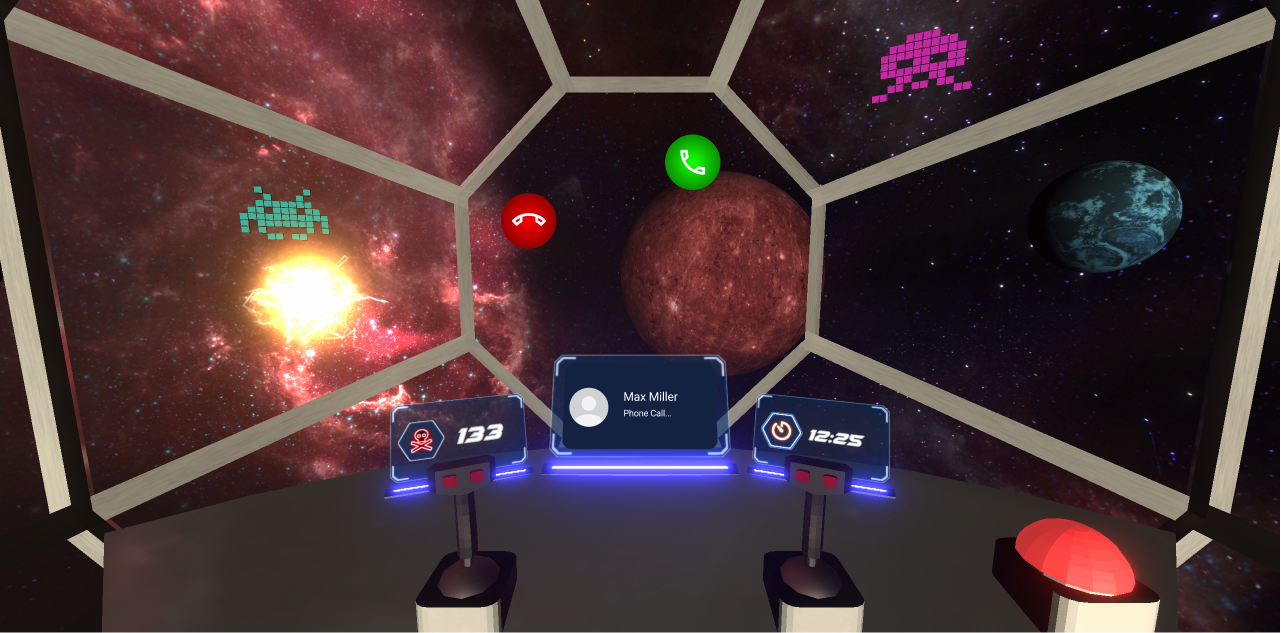Transitioning - From Reality to Virtuality and Back Again
Bachelor Thesis
Overview
What is the Transitioning Project?
The Transitioning project series investigates what needs arise in passengers and how a positive user experience can be achieved when virtual reality experiences are integrated into vehicles. Since passengers want to be aware of some stimuli or disruptions (e.g. phone call, emergency situation) in VR while traveling, the project explores which stimuli are relevant and how they can be integrated into virtuality without destroying the immersion. We distinguish between explicit and implicit representations. The explicit ones are implemented by pop-ups and are easy to understand, but overlay the VR world. The implicit ones are implemented by metaphorical objects and are less disturbing to the immersion, but are also more difficult to understand. The aim is to find out which type of representation is better suited for in car VR in which situation. If you want to know more about the project click here to visit the first iteration.
About my bachelor thesis:
The goal was to develop design guidelines for in-car VR experiences in order to offer future passengers the best possible user experience. Together with experts from the field of VR and psychology, it was examined which needs could be relevant and how information design could look like in VR. With the VR game Space Invaders, that stems from one of my student projects, the prototype for a first study was developed, in which different test stimuli were implemented. A phone call, the sound of a car horn and a braking sound, as well as a comment from a driver when the player reaches too far towards the driver. Subjects tested a version with no information in VR, a version with explicit pop-ups and explanations what happened, and a version with implicit metaphors. The result of the study was that potential passengers prefer the versions with information, as isolation during the ride can trigger negative emotions. For time-critical stimuli, the explicit version is preferred, because the representation of information can be accessed fast and easy. For time-uncritical stimuli, the implicit version is preferred to maintain immersion.
My Role
In my bachelor thesis I was responsible for developing and implementing a UX strategy. In a first iteration, I collected requirements for the topic in-car VR together with experts. The resulting hypotheses were tested in a second iteration with a user study. Besides the development of the prototype in Unity, the focus was on the preparation, conduction and evaluation of the interviews and the user study, as well as on writing the thesis.
Highlights
- 4 expert interviews
- VR prototype
- Qualitative user study with 9 subjects
Timeline
May 2021 - August 2021
